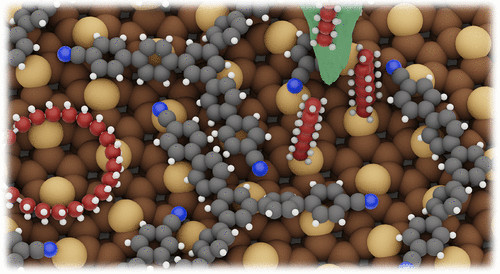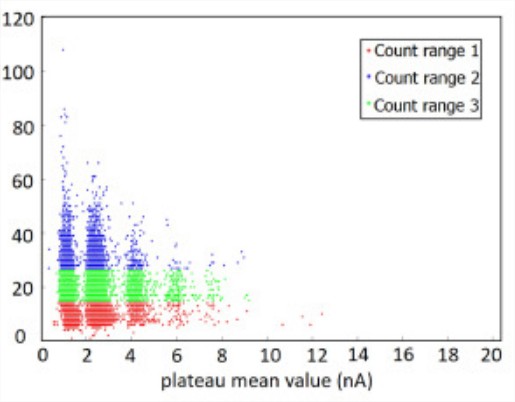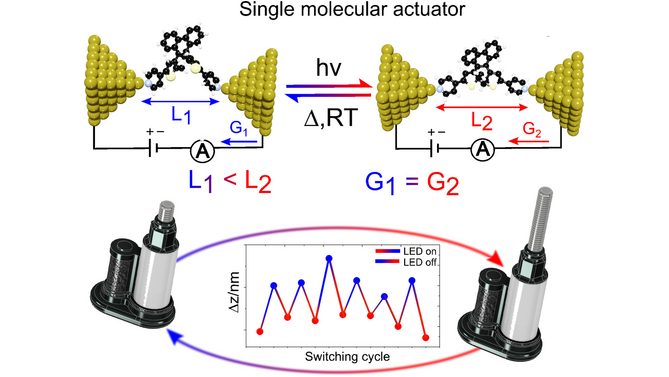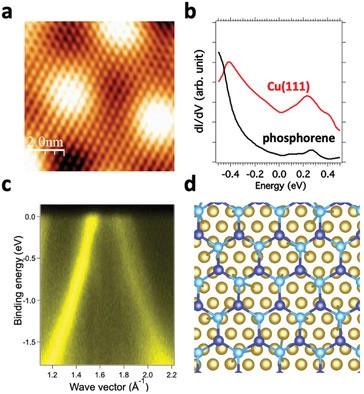publications, Réseau
Growth and local electronic properties of Cobalt nanodots underneath graphene on SiC(0001)
The coupling of graphene with a ferromagnetic material opens opportunities for technological innovations in spintronics. To obtain this coupling it is necessary to control the elaboration of interfaces at the atomic scale. Here, we present results on cobalt intercalation between graphene and a buffer layer supported on a SiC(0001) substrate. As a result, we obtain cobalt islands covered by graphene… Read More
publications, Réseau
Surface symmetry effect on the charge transfer at the black, blue, and green phosphorene/graphene interfaces
In the present study, a comparative prediction of atomic and electronic structure of black, blue, and green phosphorene/graphene heterostructures is presented using Density Functional Theory (DFT). The lowest total and interaction energies and highest charge transfer correspond to the blue phosphorene/graphene interface, followed by black and green phosphorene/graphene interfaces. This trend is the same for… Read More
publications, Réseau
Activation, Transportation, and Reaction of Alkyl Radicals on a Si(111)-B Surface by a Scanning Tunneling Microscope Tip
On-surface chemistry is a powerful method to fabricate organic nanostructures with high precision onto different kinds of surfaces. On more inert surfaces, the lack of reactivity of the underlying substrate can be circumvented by using the electrons from a scanning tunneling microscope (STM) tip, as a stimulus, to produce the reactants of a targeted reaction.… Read More
publications, Réseau
Revealing conductance variation of molecular junctions based on an unsupervised data analysis approach
For single-molecule electrical junction conductance measurements the data analysis can be a key challenge because of the large datasets and large stochastic variation in junction conformation from one junction formation cycle to the next. Here, a data sorting algorithm was used to analyze the most dominant conductance groups for four molecular systems. The algorithm was… Read More
publications, Réseau
Hybrid molecular graphene transistor as an operando and optoelectronic platform.
Lack of reproducibility hampers molecular devices integration into large-scale circuits. Thus, incorporating operando characterization can facilitate the understanding of multiple features producing disparities in different devices. In this work, we report the realization of hybrid molecular graphene field effect transistors (m-GFETs) based on 11-(Ferrocenyl)undecanethiol (FcC11SH) micro self-assembled monolayers (μSAMs) and high-quality graphene (Gr) in a… Read More
publications, Réseau
Dithienylethene-Based Single Molecular Photothermal Linear Actuator
By employing a mechanically controllable break junction technique, we have realized an ideal single molecular linear actuator based on dithienylethene (DTE) based molecular architecture, which undergoes reversible photothermal isomerization when subjected to UV irradiation under ambient conditions. As a result, open form (compressed, UV OFF) and closed form (elongated, UV ON) of dithienylethene-based molecular junctions… Read More
publications, Réseau
Visualizing In-Plane Junctions in Nitrogen-Doped Graphene
Controlling the spatial distribution of dopants in graphene is the gateway to the realization of graphene-based electronic components. Here, it is shown that a submonolayer of self-assembled physisorbed molecules can be used as a resist during a post-synthesis nitrogen doping process to realize a nanopatterning of nitrogen dopants in graphene. The resulting formation of domains… Read More
publications, Réseau
Dirac Fermions in Blue Phosphorene Monolayer
2D materials beyond graphene and in particular 2D semiconductors have raised interest due to their unprecedented electronic properties, such as high carrier mobility or tunable bandgap. Blue phosphorene is an allotrope of black phosphorene that resembles graphene as it presents a honeycomb structure. However, it is known to have semiconductor character and the crucial point is… Read More
publications, Réseau
Structural and electronic properties of Bi/Au(110)
Atomically thin bismuth films (2D Bi) are becoming a promising research area due to their unique properties and their wide variety of applications such as spintronics, electronic and optoelectronic devices. We report on the structural and electronic properties of Bi on Au(110), explored by low-energy electron diffraction (LEED), scanning tunneling microscopy (STM) and density functional… Read More
publications, Réseau
Quantum Advantage in a Molecular Spintronic Engine that Harvests Thermal Fluctuation Energy
Recent theory and experiments have showcased how to harness quantum mechanics to assemble heat/information engines with efficiencies that surpass the classical Carnot limit. So far, this has required atomic engines that are driven by cumbersome external electromagnetic sources. Here, using molecular spintronics, an implementation that is both electronic and autonomous is proposed. The spintronic quantum… Read More











